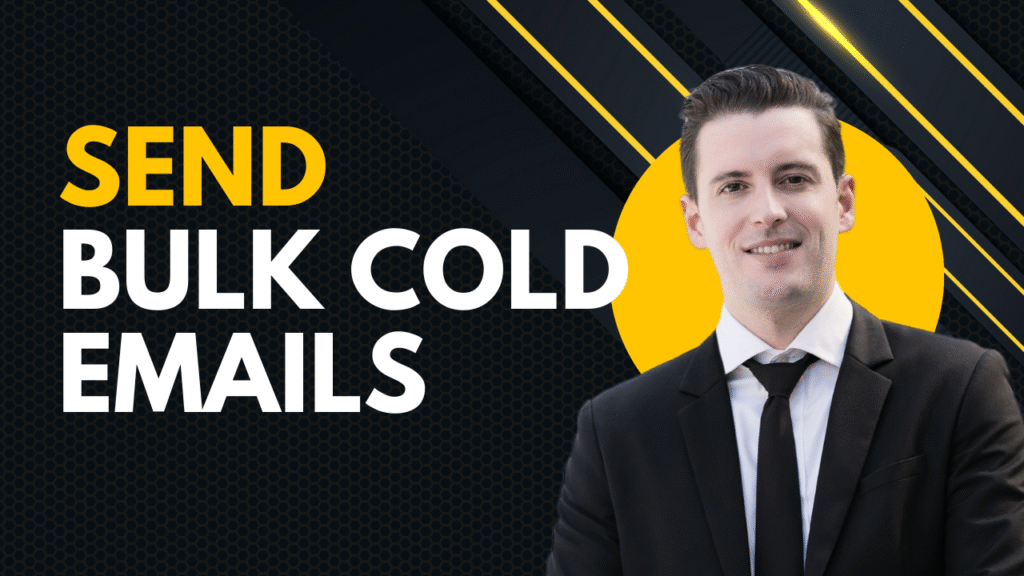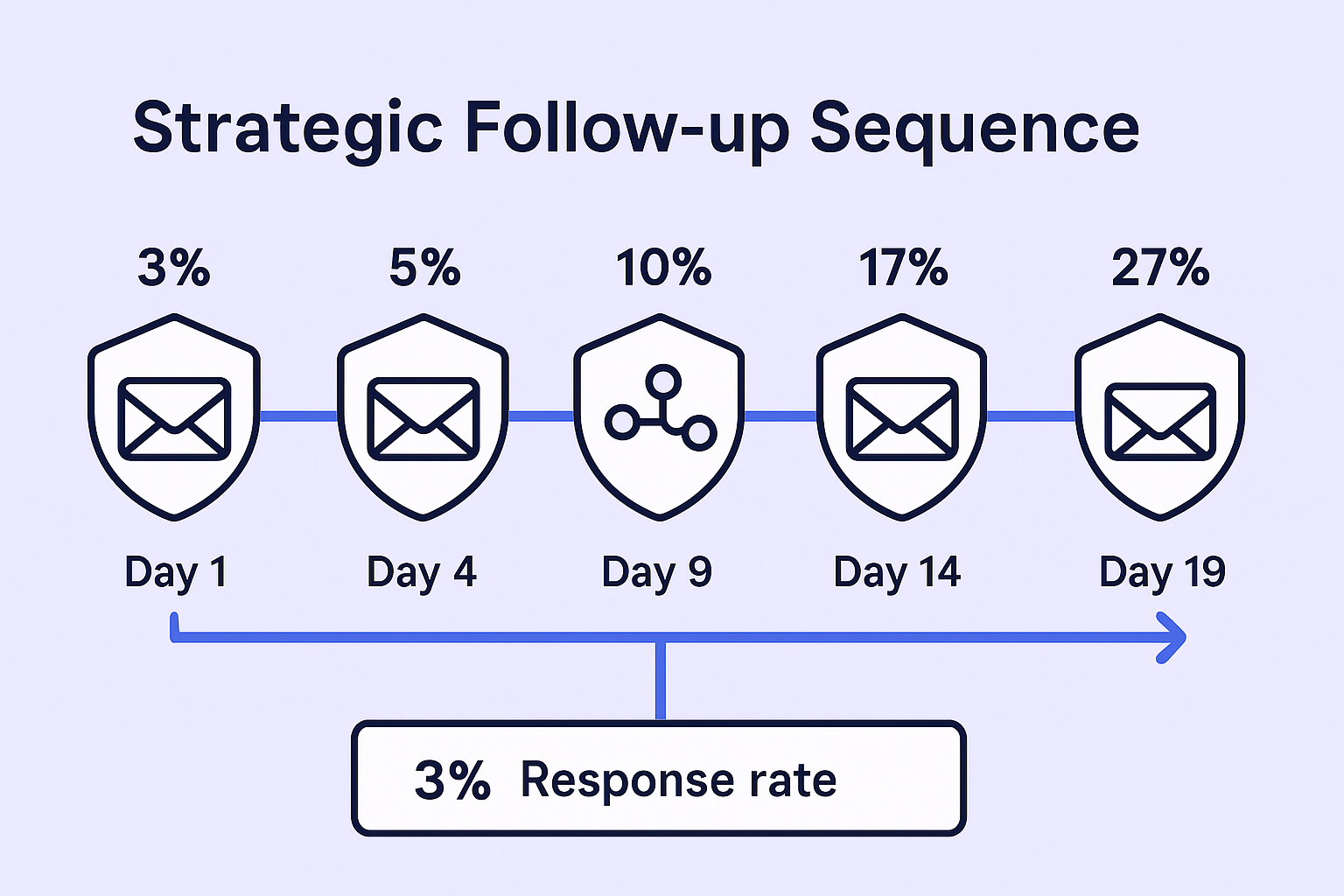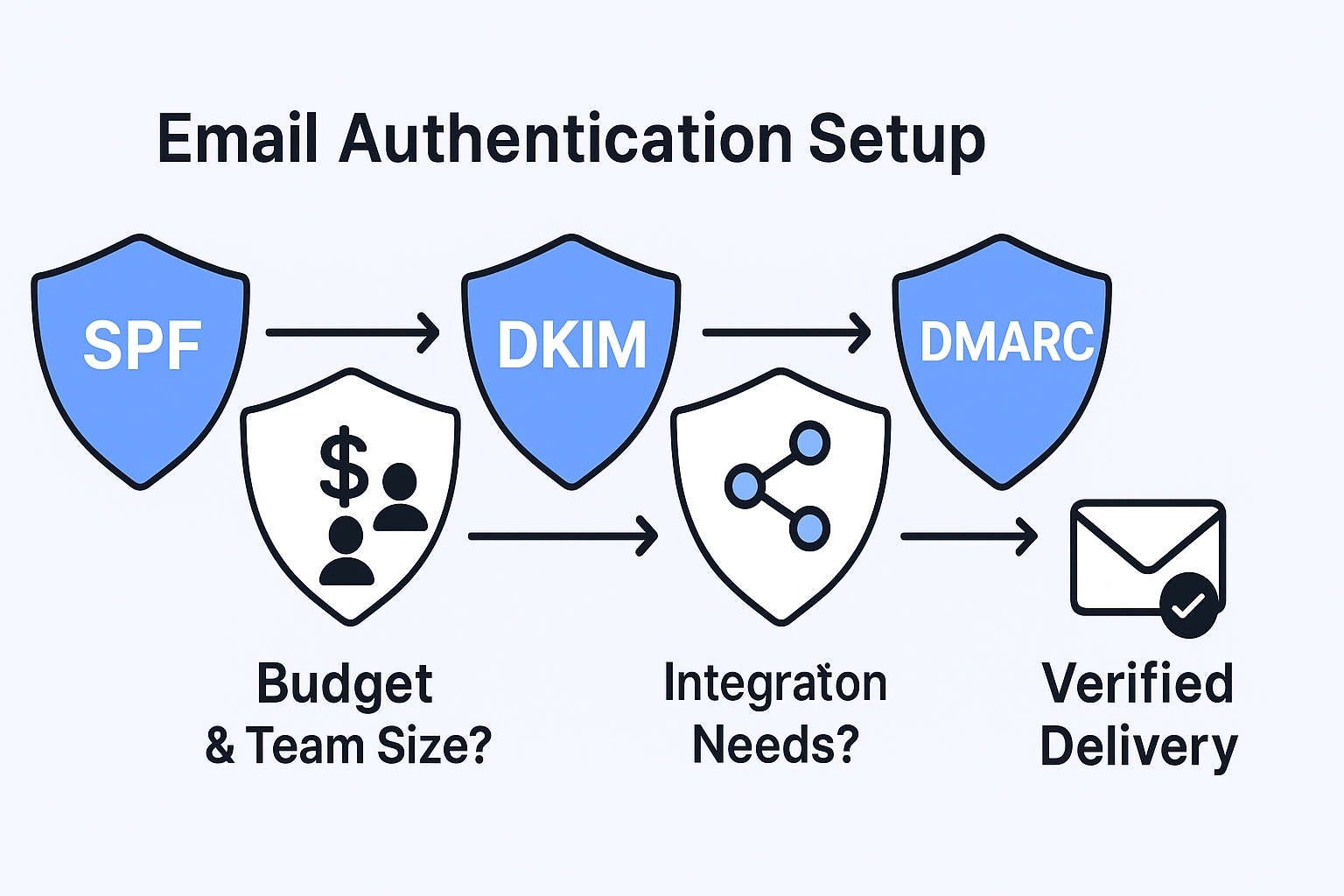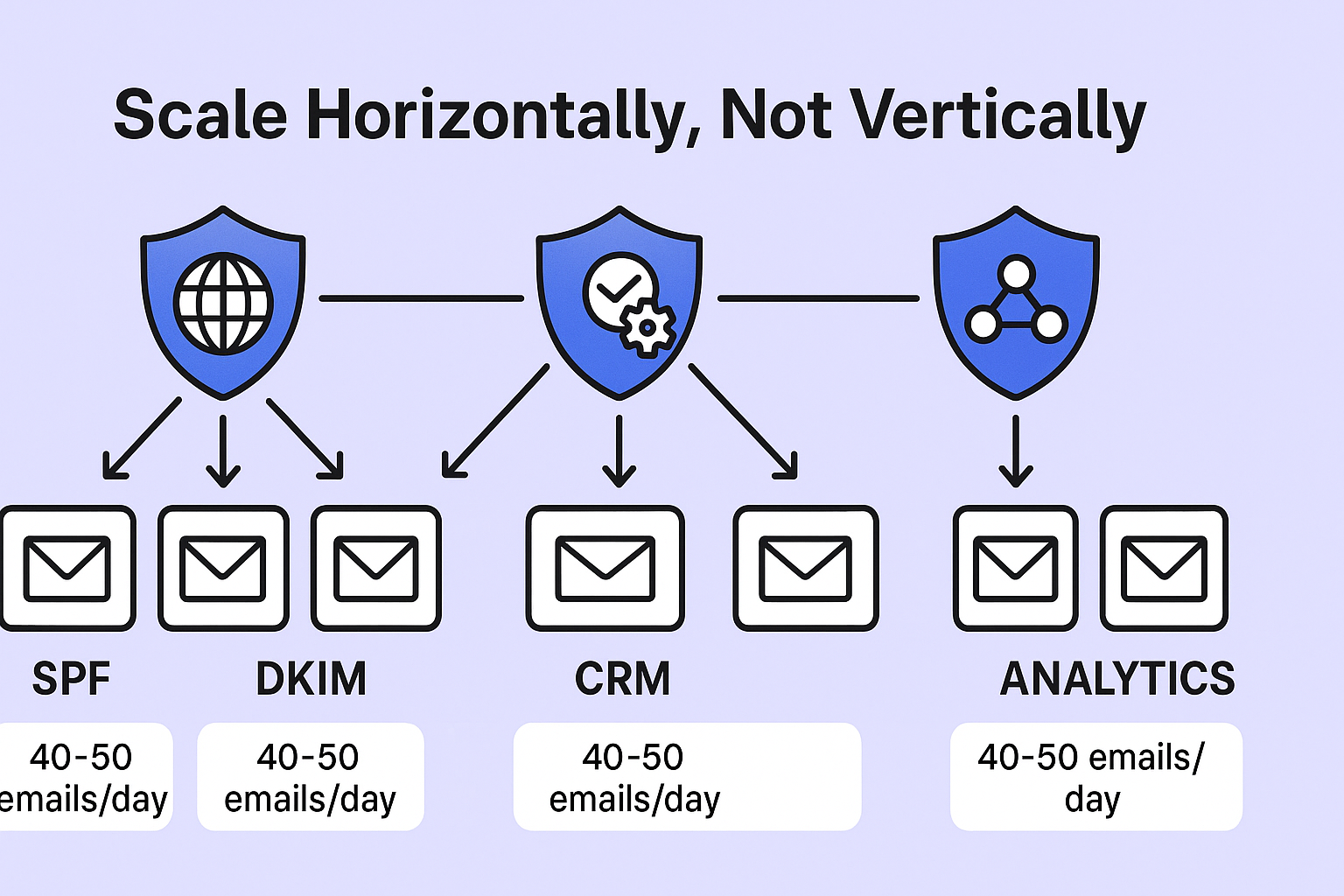- blog
- Cold Emailing
- Send Bulk Cold Emails Without Getting Blocked – 2025 Guide

How to Send Bulk Cold Emails Without Getting Blocked: A Complete Step-by-Step Process
Table of Contents
s lead to unfocused messaging and wasted resources.
Build Your Ideal Customer Profile (ICP): segmented emails increase email deliverability rates. Analyze your best existing customers to identify common characteristics like company size, industry, job titles, and pain points. Use this dCold emailing remains one of the most powerful lead generation strategies for Business Development Representatives (BDRs) and Account Executives (AEs) in 2025. Despite the rise of social media and other digital channels, email marketing delivers an average ROI of $36 to $40 for every dollar spent, making it an incredibly lucrative channel for reaching prospects at scale.
But here’s the challenge: the average reply rate is only 1–4%, and with spam filters becoming increasingly sophisticated, many cold emails never reach their intended recipients. The key to success lies not in sending more emails, but in sending them strategically and following proven best practices that ensure inbox delivery.
In this comprehensive guide, you’ll discover how to send bulk cold emails that actually land in the primary inbox, engage prospects, and drive meaningful conversations. Whether you’re just starting with cold email outreach or looking to scale your existing campaigns, this step-by-step process will help you achieve better deliverability and higher response rates.
What is the Best Way to Send Cold Emails? A Complete Step-by-Step Process
Successful cold emailing isn’t about luck—it’s about following a systematic approach that prioritizes precision over volume. 73% of B2B buyers express a preference for hearing from vendors via email, proving that when done correctly, cold email remains highly effective.
Define Your Goal & Hyper-Target Your Audience
Before sending a single email, you need crystal-clear objectives and precisely defined target recipients. Generic approaches lead to poor results and damaged sender reputation.
Start with Clear Campaign Goals: Whether you’re aiming for lead generation, meeting bookings, or product demos, your goal shapes every aspect of your campaign strategy. Vague objectiveata to create detailed buyer personas that guide your targeting.
Research Your Prospects Thoroughly: Quality beats quantity every time. Spend time understanding each prospect’s business challenges, recent company news, and potential pain points. This research becomes the foundation for compelling personalization.
Build a High-Quality Email List
Your email list quality directly impacts deliverability and response rates. the average cold email bounce rate is around 7.5%, but maintaining a clean list can keep you well below this threshold.
Verify Every Email Address: Use email verification tools before adding addresses to your list. Sending to invalid emails damages your sender reputation and triggers spam filters.
Regular List Hygiene: Clean your list every 3-6 months by removing:
- Hard bounces (permanently undeliverable addresses)
- Role accounts (support@, info@, contact@)
- Inactive subscribers who haven’t engaged in months
- Obvious spam traps or fake emails
Avoid Purchased Lists: Pre-made email lists often contain outdated, irrelevant, or invalid addresses that can seriously harm your sender reputation. Build your list organically through research and lead generation tools.
🎯Don’t Just Scale Email Volume
Our LinkedIn outbound system transforms prospects into warm connections who welcome your messages
Craft Compelling Cold Email Copy
Your message is your first impression, so every word matters. advanced personalized emails achieve an average response rate of 17%, significantly higher than the 7% rate for emails without personalization.
Personalization is Non-Negotiable: Go beyond using just first names. Reference specific company achievements, recent news, or industry challenges. personalized subject lines can increase open rates by 26% and make each email unique to spam filters.
Write Compelling Subject Lines: subject lines between 36 and 50 characters generate the highest response rates. Include context about why you’re reaching out while keeping it concise and engaging. personalized subject lines increase response rates by 30.5%.
Keep It Short and Focused: emails under 125 words tend to achieve the best response rates. Your goal is to spark interest, not tell your life story. Focus on one clear value proposition and avoid overwhelming the recipient.
Single, Clear Call-to-Action: emails featuring a single CTA receive 42% more responses compared to those with multiple CTAs. Make it easy for prospects to take the next step by giving them one specific action to take.
Structure Your Cold Email Sequence
One email rarely gets results. campaigns with 4 to 7 emails in a sequence achieve reply rates three times higher than those with only 1 to 3 emails, reaching 27% compared to 9%.
Plan Your Follow-Up Sequence: Design a sequence of 4-7 emails spaced strategically over 2-3 weeks. Each email should provide new value or a different angle on your proposition.
Timing is Critical: sending the first follow-up within three days has been shown to yield up to 31% more replies. Space subsequent emails 3-5 days apart to maintain momentum without appearing desperate.
Vary Your Approach: Each email in your sequence should offer a different perspective, case study, or value proposition. Don’t just repeat the same message—give prospects new reasons to engage.
Track & Optimize Your Campaigns
businesses that consistently incorporate A/B testing into their cold email programs observe an 82% higher ROI compared to those that do not.
Monitor Key Metrics:
- Open rates (aim for 40-60%)
- Reply rates (target 3-8%)
- Click-through rates
- Bounce rates (keep below 3%)
A/B Test Everything: Test subject lines, email copy, sending times, and call-to-actions. Small improvements compound over time to dramatically improve performance.
Use Data to Refine: Analyze which messages resonate with different audience segments and double down on what works.
Scaling Up: How to Send Bulk Emails Without Getting Blocked
Scaling cold email campaigns requires a sophisticated approach that maintains high deliverability while reaching larger audiences. The key is appearing natural to email service providers (ESPs) while systematically building your sending infrastructure.
Master Email Authentication: Your Deliverability Foundation
Email authentication protocols are mandatory for bulk sending in 2025. major email providers like Google and Yahoo have mandated DMARC for domains attempting to deliver messages to their users.
Implement SPF, DKIM, and DMARC: These protocols verify your identity as a legitimate sender. Without proper authentication, your emails may be rejected before reaching the spam folder.
SPF (Sender Policy Framework): Lists authorized email servers for your domain DKIM (DomainKeys Identified Mail): Provides digital signatures to confirm authenticity
DMARC (Domain-based Message Authentication): Specifies how to handle emails that fail authentication
Stay Compliant with 2025 Requirements: effective May 2025, bulk senders must publish a DMARC record with at least a p=none policy. Ensure your technical setup meets these evolving standards.
Warm Up Your Email Accounts & Domains
Never launch bulk campaigns from cold accounts. the warm-up period for a new inbox typically ranges from 8 to 12 weeks.
Start Small and Scale Gradually: Begin by sending 10-20 emails daily to known contacts who will open and reply. This mimics natural email usage and builds sender reputation.
Encourage Engagement: Ask friends and colleagues to open, reply to, and interact with your emails during the warm-up period. Positive engagement signals improve your sender score.
Use Automated Warm-Up Tools: Consider tools that automate the warm-up process by sending emails between multiple accounts and generating natural engagement patterns.
🚀Beyond Bulk Email Complexity
LinkedIn relationship building achieves 40% response rates while bulk cold emails struggle at 1-4%
Choose Your Domain Strategy Wisely
Protect your primary business domain by using dedicated domains for cold outreach. Never use subdomains for cold email—ESPs can detect that all volume originates from the same root domain.
Use Dedicated Domains: Purchase separate domains similar to your main business domain (e.g., if you’re company.com, use company.io or companymarketing.com). These cost around $15/year and can be replaced if blacklisted.
Avoid Subdomains: Subdomains like outreach.company.com don’t provide sufficient isolation. ESPs track sending volume across entire domains, making subdomains ineffective for protection.
Consider Domain Age: Older domains (1+ years) have better reputations than newly registered ones. Consider purchasing aged domains with clean histories.
Manage Sending Volume & Multiple Accounts
Critical Volume Limits: send a maximum of 40-50 cold emails per day per email address. Exceeding this limit risks burning your domain and sending future emails to spam.
Scale Horizontally, Not Vertically: Instead of sending more emails from one account, distribute volume across multiple accounts and domains. For example:
- 500 emails/day: 10 accounts across 3 domains
- 1,000 emails/day: 20 accounts across 5 domains
- 2,000 emails/day: 40 accounts across 10 domains
Maximum Accounts Per Domain: Use no more than 4 email accounts per domain to maintain natural sending patterns.
Rotate Between Accounts: Use automation tools to rotate sending between multiple accounts, making your campaigns appear more natural to ESPs.
Maintain Email List Hygiene at Scale
When sending bulk emails, list quality becomes even more critical. the average cold email bounce rate is 2.17%, but maintaining pristine lists can keep you well below this benchmark.
Real-Time Verification: Verify email addresses before adding them to your campaigns. Invalid emails damage sender reputation quickly at scale.
Segment and Target: segmented emails increase email deliverability rates. Create targeted segments based on industry, company size, or job function for better relevance.
Monitor Engagement: Track which segments engage most with your emails and focus your efforts on high-performing audiences.
Content Optimization for Deliverability
Use SSL-Enabled Links: Always use HTTPS links. Some ESPs block emails containing non-SSL links.
Maintain Image-to-Text Ratio: Keep images to 40% and text to 60% of your email content. Emails with only images are more likely to be flagged.
Avoid Spam Trigger Words: Words like “free,” “urgent,” “limited offer,” and “act now” can trigger spam filters.
Keep Emails Under 100KB: Large emails may be clipped by ESPs or load slowly for recipients.
What Things to Take Care of When You Are Sending Bulk Cold Emailing?
Successful bulk cold emailing requires attention to multiple critical factors that work together to ensure deliverability and engagement:
Technical Foundation:
- Set up proper domain authentication (SPF, DKIM, DMARC)
- Use dedicated domains for cold outreach, never subdomains
- Warm up all new email accounts for 8-12 weeks before bulk sending
- Limit sending to 40-50 emails per day per account
List Management:
- Verify all email addresses before adding to campaigns
- Remove hard bounces, role accounts, and inactive subscribers regularly
- Build lists organically rather than purchasing pre-made lists
- Segment audiences for better targeting and relevance
Content Strategy:
- Personalize every email beyond just using first names
- Keep subject lines between 36-50 characters for optimal performance
- Write concise emails under 125 words with single, clear CTAs
- Avoid spam trigger words and maintain proper image-to-text ratios
Campaign Structure:
- Design 4-7 email sequences spaced 3-5 days apart
- A/B test subject lines, timing, and messaging continuously
- Monitor key metrics: open rates (40-60%), reply rates (3-8%), bounce rates (<3%)
- Scale horizontally across multiple accounts rather than increasing volume per account
Compliance and Monitoring:
- Stay updated with ESP requirements and authentication standards
- Track sender reputation and domain health regularly
- Respond to all replies, even negative ones, to maintain engagement
- Provide clear unsubscribe options in every email
TL;DR on How to Send Cold Emails
Bottom Line: Successful bulk cold emailing in 2025 requires strategic precision over volume. Start by defining clear goals and building verified email lists. Personalize every message with compelling subject lines (36-50 characters) and concise copy under 125 words. Set up proper authentication (SPF, DKIM, DMARC) and use dedicated domains—never subdomains. Warm up accounts for 8-12 weeks and limit sending to 40-50 emails per account daily. Create 4-7 email sequences spaced 3-5 days apart. Scale horizontally across multiple accounts and continuously A/B test everything. Most importantly: clean lists + personalized content + proper technical setup = inbox delivery and higher response rates.
💼 Ready To Eliminate Bulk Email Stress?
Systematic LinkedIn outbound removes deliverability anxiety by building authority prospects already trust
7-day Free Trial |No Credit Card Needed.
FAQs About Sending Cold Emails
Q: What's more effective than mastering bulk cold email technical setup?
How many cold emails can I send per day without getting blocked?
Why do my cold emails go to spam?
How important is personalization in cold emails?
Should I use subdomains for cold email outreach?
How long does it take to warm up an email account?
How to ChaWhat's a good response rate for cold emails?nge my Photo from Admin Dashboard?
How many follow-up emails should I send?
When is the best time to send cold emails?

Skip Complex Bulk Email Setup
LinkedIn outbound builds relationships that make recipients eager to respond regardless of bulk sending complexity
